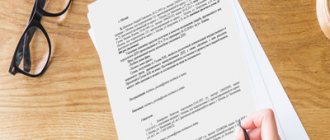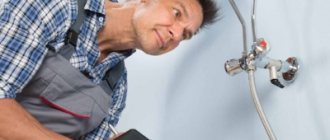Who writes testimonials at school?
The characteristics of a student in a general education institution is a kind of mini-dossier that contains information about the child that is of a personal nature, including biographical data, both positive and negative character traits, emotional and psychological state, intellectual and creative abilities, presence or absence bad habits or deviant behavior, description of relationships in the team and within the family. The characteristics are written either by the class teacher, or by the head teacher or director of a general education institution, with the assistance of a school psychologist, who provides the results of tests or diagnostics.
Its content directly depends on where the reference from the school may be required: for submission to the court, the police, the juvenile affairs department, the place of further study, or to the guardianship and trusteeship authorities. It is written on the official letterhead of the school with the seal of the institution and the signature of the compiler.
Psycho-pedagogical characteristics, its compilation
Psycho-pedagogical characteristics are the most detailed document with an objective assessment, which is drawn up by a teacher or psychologist for a specific student. It is more standardized, used within the school to build the educational process by the teacher, and also as a source of information for a social educator, psychologist, doctor, and school management.
It is advisable not to use general phrases; here the student is assessed according to predetermined indicators. The main feature of this characteristic is that it contains maximum information for the teacher, its compilation does not require much time, and it is understandable to any teacher.
It is best to use a variation of this characteristic - a graphic psychological-pedagogical map. It represents a scale, at the beginning and at the end of which there are characteristics of the student that are opposite in value. For example, “Study with interest” and “Not interested in studying.” The map is divided into blocks. For example, “Study”, “Behaviour”, “Communication in the family”, “Communication at school”, “Social activity”, “Personal qualities”. This document also allows you to evaluate the degree of development of the child’s qualities using a scale.
The psychological-pedagogical card is filled out during certain periods of study, mainly when there is a change of teachers.
Why do you need a reference from school?
The requirement to provide such a document has become common in recent years for various structures and institutions. This is due to the fact that it saves organizations from wasting time and allows them to quickly find out as much personal information about the child as possible, which during a conversation with the student himself and his environment will not be so objective, accurate and truthful. Plus, the characteristic makes it possible to draw a psychological portrait of a person in absentia, even before personal acquaintance.
Positive reference for a primary school student
Characteristics for a student of grade 3-B "MOU School No. 35" in Arkhangelsk
Kolkhoznikov Daniil Vasilievich, living at the address: st. Moskovskaya, 28, apt. 112.
Daniil Kolkhoznikov has been studying at school No. 35 since the first grade. He is brought up in a full-fledged family with his younger brother. Parents take an active interest in their son’s school life, regularly attend parent-teacher meetings and monitor the educational process. The family's financial situation is stable, the child has never needed anything.
The student has high intellectual abilities and a thirst for new knowledge in various fields. The desire and ability for the exact sciences and mathematics are especially noticeable. Possesses the skills of independent and team work in the classroom, thinks logically, analyzes, draws conclusions, and clearly expresses his thoughts or position.
Daniil’s behavior is exemplary: he does not violate discipline in the classroom and order at school, and does not skip classes.
Positive character traits include: hard work, perseverance, kindness, honesty, willingness to help classmates, responsibility and sociability. There are no bad habits. Negative character traits include excessive curiosity, stubbornness and slightly inflated self-esteem.
The student is distinguished by a high level of education, tact, and respect for elders. He enjoys authority among his peers. He is interested in boxing and has received gold and silver awards at the city level.
He studies at an art school, where he shows consistently high results.
He studies excellently, regularly completes his homework, and treats the teacher’s requests conscientiously.
Characteristics of a truant student
Sometimes the school has to issue such a document for a truant student. The characteristics of a student who does not attend school have a similar structure, but differ in content, which is quite justified.
Characteristics for a student of grade 8-B of Municipal Educational Institution “School No. 131” in Moscow
Sidorenko Lyudmila Glebovna, living at the address: Moscow, st. Geroev Stalingrada, 14, apt. 5.
Student of school No. 131 Lyudmila Glebovna Sidorenko has been studying at this educational institution since September 1, 2003. He is brought up in a full-fledged family, but does not consider his parents to be authorities, and therefore relationships in the family are complex. Parents try to pay maximum attention to their daughter, but all attempts to interfere in her personal and school life are met with hostility.
The student's intellectual abilities are at a sufficient level, she shows interest in chemistry and biology, geography and history. At the same time, he shows unsatisfactory results in mathematics, Russian language and literature. Lyudmila has mental and thinking abilities, but due to laziness, she shows them reluctantly. He often expresses his personal opinion in class and substantiates it, but in a rather harsh form. Does not tolerate compromises.
He skips classes often and for no reason, citing a lack of interest in studying.
Positive character traits include: sociability, openness, honesty, increased understanding of justice. Negative character traits include stubbornness, irresponsibility, laziness, self-confidence bordering on narcissism.
Shows no interest in creativity. Shows good results in sports and is actively involved in martial arts.
Relationships in the team are tense. He knows how to find a compromise with classmates only if it is beneficial, otherwise he prefers to remain silent, without entering into open conflicts.
There are no bad habits.
He studies well only in those subjects in which he shows interest. The level of knowledge in Russian language and literature, algebra and geometry is below average due to regular absenteeism. Has a tendency to cheat, but has the potential to show better results.
Components of a psychological and pedagogical description of a child
What does a positive characteristic for a schoolgirl or student of a general education institution include? Before giving a specific example, let us highlight the main points that are important to indicate.
First, general information about the child is indicated: last name, first name, date and place of birth, home address. Next, the year of admission to this institution is noted, as well as the number of full years of study at the educational institution.
It is necessary to describe family relationships, material and social conditions. If you need a positive characteristic for the military registration and enlistment office, it is worth noting the characteristics of physical development, the presence of pathologies and deviations.
Special attention in the psychological and pedagogical description is given to motor skills, movement disorders: disinhibition, paresis, stiffness, coordination of movements, hearing and vision, fatigue, chronic diseases.
Positive characteristics of a person entering a prestigious military school also include a description of the specifics of cognitive activity, an indication of attention, and resistance to long-term work. The teacher notes auditory, visual, tactile perceptions, the specifics of memory: completeness, speed, quality of assimilation of the material.
What else should the characteristics of a student in the class contain? A positive feature that must be noted in the description is thinking. The teacher indicates the level of developed skills of analysis and synthesis, as well as the ability to specify and generalize.
You can also note the child’s vocabulary, the characteristics of his emotional-volitional sphere. The teacher notes the degree of emotional stability, depth, and stability of feelings.
A sample positive characteristic contains a description of the skills of self-analysis and self-control, planning of educational and extracurricular activities.
Leadership qualities, personality orientation, self-esteem, level of aspirations, and interests are noted.
The child’s conflict level, attitude towards work, and extracurricular interests are also noted. The description ends with conclusions and recommendations.
Characteristics of the average school student
Characteristics for a student of grade 7-A of Municipal Educational Institution “School No. 51” in Simferopol
Myznikova Vitalina Alekseevna, living at the address: st. Dmitry Ulyanov, 6, apt. 15.
Myznikova Vitalina Alekseevna moved to school No. 51 in 2021. Before that, she studied at several educational institutions, which was associated with frequent family moves. The family is complete: the father is a military man, the mother is a housewife. In the family, due attention is paid to discipline, upbringing and education of the child.
In the educational process, Vitalina demonstrates average knowledge, is inactive in class, and is reluctant to answer at the blackboard, but she consistently writes independent work and tests with a solid B. Completes homework regularly, but not always diligently, and does not show initiative in learning. Has gaps in mathematical knowledge, giving more preference to the humanities. Has a limited vocabulary, which is associated with indifference to reading.
According to the school psychologist, the student’s level of knowledge was significantly affected by constant moving. This also had a negative impact on the girl’s emotional state. It is difficult for her to find a common language with her peers, she tries not to make close friendships, and jealously guards her personal space.
Positive qualities include: decency, responsibility, fairness, honesty. Negative character traits include isolation, laziness, low self-esteem, and inability to concentrate.
She takes part in the social life of the class and is always ready to defend the honor of the class and school at sporting competitions. He is especially interested in gymnastics and acrobatics.
Sample characteristics
Psychological characteristics
Student ___________class secondary school №______ FI_________ Date of birth_________________ Home address__________
1
.
The type of difficulty
is explained by: gaps in mastering ethical knowledge, unformed moral ideas, lack of skills of adequate behavior, personality changes associated with distorted ideas about relationships with others, organic disorders of the nervous system, mental instability, increased affectivity, disinhibition of drives.
2.Psychophysiological features
a) stable extrovert: sociable, open, talkative, accessible, carefree, lively, carefree, prone to leadership;
b) unstable extrovert: touchy, restless, aggressive, excitable, changeable, impulsive, optimistic, active; c) stable introvert: passive, cautious, reasonable, peaceful, reserved, reliable, even, calm; d) unstable introvert: gloomy, anxious, pessimistic, withdrawn, uncommunicative, quiet; Personality type (according to Eysenck) Characteristics of the type:________________________________________________________________ ___________________________________________________________________________________ ___________________________________________________________________________________ ___________________________________________________________________________________ 3. Emotional-volitional sphere.
Type of character accentuation (according to Shmishek): hyperthymic anxious dysthymic pedantic emotive stuck demonstrative exalted cyclical excitable
4. Motivational-need sphere. Needs:
for physical improvement, spiritual improvement, for work, for friendship, for emotional closeness with peers, for respect and support from adults, from peers, for entertainment, for comfort, for leadership, for helping others, for achievement high results in activity, in autonomy, in prestige, sexual needs.
5. Features of school maladaptation:
a
) study
: low learning ability with positive learning motivation, satisfactory or high learning ability with persistent indifference or a negative attitude towards learning, low level of learning ability with a negative attitude towards learning;
b) psychological reasons: lack of formation of methods of educational activity, insufficient development of mental processes, inadequate use of individual typological characteristics; c) labor and social activity:
low (high) labor (social) activity, inability to engage in systematic, purposeful, intense activity, low (high, situational) performance, low (high) sense of responsibility, inability (ability) to complete the work started , initiative (lack of initiative), low (high, average) organizational skills;
d) psychological reasons: defects in education, undeveloped work skills, underdeveloped volitional qualities, lack of interest in work. 6. Anxiety:
a) general (according to Prihozhan): high, increased, normal, low;
b) personal: high, increased, normal, low; c) interpersonal: high, increased, normal, low; d) school (according to Phillips): high, increased, normal, low. High level by factors: fear of knowledge testing situations, fear of not meeting the expectations of others, frustration of the need to achieve success, conflicts with teachers, fear of presenting oneself. 7. Intellectual level (according to Roven):
Level of intellectual development: high, average, low.
Social characteristics.
1. Position in the group
: leader, preferred, isolated, acceptable, rejected.
2. Attitude towards the group
: positive, negative, indifferent.
3.
Part of
the group
________________________________________________________________ ________________________________________________________________________________
4. Reference group
________________________________________________________________________________ ________________________________________________________________________________
5. Violation of communication and behavior:
a) age-related situational and personal reactions: refusal, opposition (active, passive), imitation (imitation), compensation (desire to eliminate weakness), overcompensation, emancipation (refusal of adult care), grouping with peers, sexual desires, hobby reaction, dysmorphoreaction (fixation on appearance), reflexion reaction (fixation on the inner world); b) dominant maladjustment syndromes: distrust of new people, things, situations; depression; withdrawal; anxiety towards adults and peers; hostility towards adults and peers; lack of social normativity; social deprivation; restlessness; emotional stress; neurotic symptoms; unfavorable environmental conditions; advanced sexual development; mental retardation; learning difficulties; diseases and organic disorders; physical defects. Disadaptation manifests itself to a minor (significant) extent. It is situational (chronic) in nature. The child is on the verge of clinical disorders and needs (not) the help of a neuropsychiatrist. c) the nature of deviation: immoral, delinquent (non-criminal offenses), criminal behavior. Reasons: heredity, social. development situation, personal crisis, conflict, failure in leading activities, inadequate self-esteem, lack of authority, state of passion. d) type of behavioral disorder: absenteeism, running away, theft, petty speculation, fights, drinking alcohol, drugs, substance abuse, smoking, deviation of sexual behavior (masturbation, exhibitionism, group sex, fetishism, homosexuality), suicidal behavior (demonstrative, true, affective ), fears (phobias), obsessions (blinking, twitching, nail biting, thumb sucking, fear of infection, repeated movements, words), verbal disorders (foul language, pathological lying), gambling, computer addiction, increased aggressiveness, increased anxiety , hyperactivity, autism, increased conflict, negativism, increased stubbornness, impulsiveness, selfishness, weakness of will, affectivity.
6. Family relationships:
a) type of family according to educational potential: educationally unstable (overprotection); educationally weak with loss of contact with the child and control over him; educationally weak with an aggressive-negative atmosphere; marginal (with alcoholic, sexual, drug demoralization); delinquent; criminal; mentally aggravated, neglect, child abuse b) cultural level of the family: high average, low. c) relationships: trusting, equal, conflicting, alienated. d) parental authority: high, low, insufficient, low. e) style, methods, techniques of education: pedagogically correct, incorrect, inadequate. Unity (lack of unity) of educational influences of family members. f) the social regime and family climate are satisfactory, positive, unsatisfactory. g) level of fulfillment of school requirements: high, satisfactory, insufficient, low, extremely low. The family is (not) a stabilizing factor for the child.
Additional information:
Compiled by a psychologist:
Psychological characteristics of a student in class _ “_” __________________
I. General information about the child.
1. Full name - ____________________, date - __________, age at the time of the study - 9 years. 2. Place of residence - ______________________________ 3. Information about parents - _______________________________, father A__________________________________________________ Grandparents are pensioners, they live together with their daughter and grandson in a two-room apartment. 4. School No._, class-_ “_”.
I I. Methods for studying a child’s personality:
PROTOCOL OF PSYCHODIAGNOSTIC EXAMINATION OF A STUDENT _ "_" CLASS __________
- Anxiety test (R. Temple, V. Amen, M. Dorki)
Purpose: To study and evaluate the anxiety of a child of primary school age in typical life situations. Who conducted it: 5th year student of the Faculty of Education and Science A.M. Sinyakova. Date: 10.17.2006 As a result of the study, it was revealed: -In 100% of situations that have a positive emotional connotation (Playing with younger children, Playing with older children, Child with parents) (...) has an emotionally positive experience. In 100% of situations with a negative emotional connotation (Object of aggression, Reprimand, Aggressive attack and Isolation) (...) has an emotionally negative experience. These data may indicate that the child gives a positive or negative assessment of his emotional background adequately to various life situations. In 57% of situations that have a double meaning (4 out of 7), we can talk about the presence of (...) negative emotional experience. These situations are: Going to bed alone, Washing up, Picking up toys and Eating alone. - The highest level of anxiety in (...)a manifests itself in situations that simulate relationships that simulate everyday activities (Dressing. Going to bed alone. Washing up. Collecting toys. Eating alone). — (...) has a high level of anxiety, as evidenced by the child’s anxiety index (percentage ratio of the number of emotionally negative choices to the total number of drawings): 57%.
Protocol of psychodiagnostic examination
of Student _ “_” class ___________
- “LADDER” METHOD V.G. Shchur
Goal: to determine the characteristics of the child’s self-esteem (as a general attitude towards himself) and the child’s ideas about how other people evaluate him. Who conducted it: 5th year student of the Faculty of Education and Science A.M. Sinyakova. Date: 10.17.2006 As a result of the study, the following was revealed: - the child’s attitude towards himself is positive, self-esteem is adequate, positive (placed himself on the 4th of 6 steps. - he perceives the attitude of other people towards the child quite differentiated: (...) believes, that close adults (mother, father, grandfather, grandmother, friend, and also teacher) treat him differently. The child believes that his mother will put him at the very top of the ladder, but he puts himself a little lower - on the third step from the top. This is may indicate that (...) he feels strong support from the most significant adults. - the child’s self-assessment from the teacher is lower than his own, the child’s explanations about this - the teacher’s dissatisfaction with “bad behavior and low grades”, which indicates that (...) is able to take a rather critical approach to assessing himself as an individual.
PROTOCOL OF PSYCHODIAGNOSTIC EXAMINATION
OF STUDENT _ "_" CLASS ______________
- School motivation questionnaire N.G. Luskanova
The purpose of the diagnosis: to study the level of school motivation. Who conducted it: 5th year student of the Faculty of Education and Science A.M. Sinyakova. Date:10/17/2006
The study revealed:
Based on the diagnostic data, a low level of school motivation was revealed in (...), as evidenced by the unwillingness to attend school, during lessons he often engages in extraneous activities and games, and experiences serious difficulties in learning: he cannot cope with educational activities, he experiences problems in relationships with the teacher. School is often perceived by him as a hostile environment, therefore (...) may sometimes show aggression, refuse to complete tasks, or follow certain norms and rules.
PROTOCOL OF PSYCHODIAGNOSTIC EXAMINATION OF A STUDENT _ “_” CLASS (…)(…)A
- CATTELL'S PERSONALITY QUESTIONNAIRE FOR JUNIOR SCHOOLCHILDREN
The purpose of the diagnosis: to study the level of school motivation. Who conducted it: 5th year student of the Faculty of Education and Science A.M. Sinyakova. Date: 10/17/2006 The study revealed: -High level of expression of Extraversion (9 points), which characterizes the child as an emotional, open, sociable, sympathetic child. -High level on the Emotional Inexcitability scale (8 points) - characterizes (...) as impatient, easily excitable, with instability of attention, increased motor activity. — Low level of Self-Control (3 points), which is a sign of the inability to control one’s behavior.
Other diagnostic methods and forms used in the study:
- CONVERSATION WITH A PSYCHOLOGIST, CLASS TEACHER
- CHILD MONITORING
- STUDYING THE DOCUMENTATION AVAILABLE FOR THE CHILD (...) is registered with a psychologist as a child with behavioral characteristics)
III. General characteristics of the child’s relationship system in the classroom. Social contacts:
- with peers. Communication status: active. In the 3rd grade, there was a dependence on classmate Vladik Bogdanov (a child with pronounced aggressive behavior). At the time of the examination, he stopped his friendship with Bogdanov. Establishes relationships with all classmates, but has close friendly relations with the guys from the yard. Prefers friends who like to play around, run, and play pranks. The school community is often perceived by him as a hostile environment, therefore (...) can sometimes show aggression.
- with adults. May exhibit a variety of communication signs: from subordination and shyness to impudence and impudence; reacts to teacher criticism passively and positively (understands the criticism, agrees with it, but does not correct shortcomings). Experiences problems in relationships with the teacher.
IV.
General characteristics of the student’s personal sphere. Characteristics of personality traits:
The child’s attitude towards himself is positive, self-esteem is adequate, the positive attitude of other people towards the child is perceived by him quite differentiated: (...) believes that close adults (mother, father, grandfather, grandmother, friend, as well as teacher) -they treat him differently. The child’s predicted assessment of himself by the teacher is lower than his own; the child’s explanation for this is the teacher’s dissatisfaction with “bad behavior and low grades,” which indicates that (...) is able to take a fairly critical approach to assessing himself as an individual. The student is emotional, sociable, impatient, and easily excitable. There is instability of attention, increased motor activity, and he cannot always control his behavior. Increased anxiety (...) manifests itself in situations related to everyday activities and routine moments. School motivation is not sufficiently developed, as evidenced by the reluctance to attend school, during lessons he often engages in extraneous activities and games, and experiences serious difficulties in learning: he cannot cope with educational activities, which is associated with insufficient development of voluntary attention. (...) enjoys drawing and plays football in the sports section.
PSYCHOLOGIST'S CONCLUSIONS:
(...) are characterized by such behavioral and personal characteristics as violation of discipline in lessons and during breaks, poor academic performance, low level of school motivation.
In this regard, it is RECOMMENDED that the child’s class teacher:
- draw up an individual work plan to support the family, taking into account the individual characteristics of the family situation; — Every quarter, visit the child at home in order to study living conditions and study the situation of relationships between family members. -monitor employment (...) during the holidays; -Relationships should be built on conviction, a calm, friendly tone of communication. Through personal example and repeated tactful repetition, instill (...) the rules of behavior in school life. Corrective work is recommended to develop self-control skills and skills of constructive interaction with peers. To provide knowledge on the rights of the child, the rights and responsibilities of schoolchildren, legal knowledge. Strictly monitor attendance and academic performance (…). -Establish a positive emotional background associated with school - under no circumstances compare the child with other children. Do not speak badly about the school, do not criticize teachers in the presence of the child, create in him a positive, positive attitude towards school. - Stimulate the educational and cognitive activity of children through: creating situations of emotional experience, creating situations of entertainment, situations of relying on life experience, situations of success in educational and cognitive activity. Date of research: 10/17/2006 Conducted by 4th year FSP and P student Elena Smarigo.
| Documentation of a school psychologist - Documentation (plans, reports, characteristics) |
| Author: Administrator |
| 01.03.2010 11:58 |
| Appendix 2 The psychological characteristics of a “difficult” student are written in two copies by a teacher-psychologist, one of which is kept in the deputy’s record card. director for IVR, the other - with an educational psychologist. Psychological characteristics of a “difficult” student ________________________________ (student's full name) Date of birth: Date of testing: The characteristics are written in free form and contain a description:
Educational psychologist ___________________ (full name, signature) |
Appendix 3
The psychological and pedagogical characteristics of the family are written in duplicate by an educational psychologist together with a social pedagogue. One copy is kept in the account card of the deputy. director for IVR, the other - with an educational psychologist.
Psychological and pedagogical characteristics of the family of a “difficult” child
________________________________ (student's name)
Date of birth: Date of testing:
The characteristics are written in free form and contain a description:
- family composition, education of its members, whether there was a breakdown of the family;
- stability of family relationships;
- the main causes of quarrels and conflicts;
- which family members are involved in raising children;
- style of upbringing in the family, whose opinion the child takes into account;
- organization of leisure time in the family;
- the educational psychologist describes the relationships in the family (according to the data of psychological and pedagogical diagnostics of intrafamily relationships).
Social teacher (describes the first 6 points)
___________________ (full name, signature)
Educational psychologist ___________________ (full name, signature)
Recommendations for interacting with “difficult” students
____________________________
(student's name)
To the social teacher:
_______________________________________________________ Familiarized with
_______________________ (signature)
To the class teacher: _______________________________________________________ Familiarized with
_______________________ (signature)
To parents: _______________________________________________________ Familiarized with
_______________________ (signature)
Subject teachers:
_______________________________________________________ Acquainted with
_______________________ (signatures of teachers in the subjects in which the child has difficulties)
To the Inspector of Educational Education: _______________________________________________________ Acquainted with
_______________________ (signature)
Administration:
_______________________________________________________
Acquainted with
_______________________ (signature) To the organizing teacher:
_______________________________________________________ Acquainted with
_______________________ (signature)
Appendix 5
The plan for correctional work with a “difficult” student is drawn up in quarters and includes specific measures for the correction of the following specialists: class teacher, educational psychologist, social teacher, subject teachers, teacher-organizer, deputy. Director for IVR, Deputy. Director of Internal Affairs, Inspector of Internal Affairs, librarian. In the “date” column, the specialist enters the planned date of the event; in the “completion mark” column, the date of the planned event or change in the plan is entered, if this event is postponed for some reason. Unplanned events are recorded in the appropriate column below upon completion in the section of the relevant specialist.
I APPROVED
Director of secondary school No. ___
_________________________
(full name, signature) __»_______________200_g.
PLAN
CORRECTIONAL WORK FOR THE 2nd QUARTER 200_-200_ OF THE SCHOOL YEAR
| Month | Executor | Corrective measures | date | Completion mark |
| November | Classroom teacher | |||
| Social teacher | ||||
| Educational psychologist | ||||
| Subject teachers | ||||
| Teacher-organizer | ||||
| IDN inspector | ||||
| Deputy Director of IVR | ||||
| Deputy Director of HR | ||||
| Librarian | ||||
| December | Classroom teacher | |||
| Social teacher | ||||
| Educational psychologist | ||||
| Subject teachers | ||||
| Teacher-organizer | ||||
| IDN inspector | ||||
| Deputy Director of IVR | ||||
| Deputy Director of HR | ||||
| Librarian |
[1]
[2][3][4][5][6][7][8][9][10]
Appendix 6
The program is compiled by the deputy. director for IVR, social teacher and educational psychologist for six months based on the psychological and pedagogical characteristics of the student, his family and the recommendations of the educational psychologist. The program includes the work of the class teacher, SPPS specialists, IDN inspector, subject teachers, and librarian.
I APPROVED
Director of secondary school No. ___
__________________________
(Signature, full name)
“_” _______________200__
CORRECTIONAL WORK PROGRAM (sample)
with a student of ____ class of secondary school No.___ in Minsk ____________________ (full name) for ___ half-year of the 200__-200__ academic year Date of the meeting of the pedagogical council - _________
| № | Corrective measures | Performers | Period of execution |
| 1. | Daily monitoring of attendance at training sessions. | Class teacher, social teacher | Constantly |
| 2. | Studying the features of the development of the emotional and personal sphere. | Educational psychologist | September October |
| 3. | Taking timely measures to prevent and overcome neglect in studies: -implementation of a differentiated approach to learning; - use of stimulating and organizing types of assistance during the lesson; -monitoring current progress and communicating information about it to parents. | Cl. head, subject teachers, deputy. Director of HR | During a year |
| 4. | Conducting individual correctional classes with elements of art therapy, developing the ability to analyze one’s own behavior and resolve conflict situations. Program “Labyrinths of my “I””. | Educational psychologist | November-December, once a week |
| 5. | Organization and control of attendance at stimulating classes in subjects in which the teenager has low performance (below “3”). | Cl. head, subject teachers, deputy. Director of HR | As needed |
| 6. | Involving collective creative activities in the preparation and participation: A) select a permanent assignment in the class, taking into account interests and inclinations; B) involve in conducting classroom hours and information hours; B) involve in the sports section; -library. | Cl. supervisor Social teacher Librarian Teacher-organizer | Within half a year |
| 7. | Visiting a teenager's family. Discussion with mother about problems of behavior and education. | Social teacher Kl. supervisor | 1 time per quarter |
| 8. | A series of individual correctional conversations with a teenager on the topic “Safe and responsible behavior” for the purpose of crime prevention. | Social teacher, Inspector of Internal Affairs | 2 times a month |
Deputy Director of IVR Teacher-psychologist Social teacher
Appendix 7
Filled out by a social teacher together with an educational psychologist based on the results of correctional work for the year. Stored in the student's record card.
RESULTS
of correctional work for the __half of the 200__-200___ academic year with a student _____________________
Psycho-pedagogical status at the time of drawing up the program:
Current problem of difficulties identified during the examination: _________________________________________________________________ Goal and task of correctional work: ________________________________________________________________________________ General assessment of the effectiveness of the work carried out: ________________________________________________________________________________ Pedagogical essence of the changes: ________________________________________________________________________________ General recommendations for further work with the student: ________________________________________________________________________________ Teacher-psychologist (fills out the first 3 points) ________________________________________________________________ Social teacher (fills out the last 2 points)______________________________________________________________ Deputy. Director for IVR______________________________________________________________
Program for diagnosing the personality of a deviant teenager
| Diagnostic techniques | date |
| Diagnostics of the cognitive sphere | |
| 1. “Shape recognition” | |
| 2. “Arrangement of numbers” | |
| 3. "Memory for numbers" | |
| 4. Methodology “Learning 10 words” by A.R. Luria | |
| 5. "Simple Analogies" | |
| 6. "Word Elimination" | |
| 7. “Identification of essential features” | |
| 8. “Finding numbers” (Schulte tables) | |
| 9. | |
| 10. | |
| 11. | |
| 12. | |
| 13. | |
| 14. | |
| 15. | |
| Diagnosis of personality traits and mental states | |
| 1. Smišek test | |
| 2. "Nonexistent Animal" | |
| 3. Phillips test | |
| 4. Test “Home. Tree. Man" (DCH) | |
| 5. Self-assessment scale of anxiety level by Ch.D. Spielberger, Yu.L. Khanin | |
| 6. SAN Questionnaire | |
| 7. CBS | |
| 8. Thomas test | |
| 9. Eysenck's method for determining temperament | |
| 10. Constructive drawing of a man from geometric shapes | |
| 11. Psychogeometric test | |
| 12. Test of humorous phrases (TUF) | |
| 13. | |
| 14. | |
| 15. | |
| 16. | |
| 17. | |
| 18. | |
| 19. | |
| 20. | |
| 21. | |
| Diagnostics of interpersonal relationships in a team | |
| 1. Sociometry | |
| 2. COE | |
| 3. Lutoshkin color relations test | |
| 4. Referentometry | |
| 5. | |
| 6. | |
| 7. | |
| 8. | |
| 9. | |
| 10. | |
| Diagnosis of family relationships | |
| 1. DIA questionnaire (Eidemiller, Justitsky) | |
| 2. ROD questionnaire | |
| 3. "Kinetic drawing of a family" | |
| 4. Methodology for diagnosing parental attitudes (A.Ya.Varga and V.V.Stolin) | |
| 5. “Kinetic drawing of a family” | |
| 6. Diagnosis of family relationships (questionnaire) | |
| 7. Typical family state | |
| 8. | |
| 9. | |
| 10. | |
| 11. | |
| 12. | |
| 13. | |
| 14. | |
| 15. | |
| 16. | |
| Diagnosis of vocational guidance | |
| 1. Map of interests “Do you love? Do you like it? | |
| 2. Differential diagnostic questionnaire “I would prefer” | |
| 3. Holland test | |
| 4. Tapping test | |
| 5. Method of express diagnostics of characterological characteristics | |
| 6. Measuring achievement motivation | |
| 7. | |
| 8. | |
| 9. | |
| 10. | |
| 11. | |
| 12. | |
| 13. | |
| 14. | |
| 15. |
Psychologist, Secondary School No. _____________________________________
(full name, signature)
Characteristics of a difficult teenager for the police or court
Characteristics to the court
This is what a character reference for a difficult teenager looks like in court:
For the police
Characteristics of a student in grade 11-B of Municipal Educational Institution “School No. 98” in St. Petersburg
Raduzhny Mikhail Sergeevich, living at the address: st. Sovetskaya, 14, apt. 65.
Raduzhny Mikhail Sergeevich has been studying at school since the first grade. Until the seventh grade, I was raised in a full-fledged family; after my parents’ divorce, I stayed to live with my mother and stopped communicating with my father. According to the psychologist, this factor negatively affected the child, and he began to demonstrate deviant behavior, became uncontrollable, denying all human values, blaming his father for all his troubles. Both the student’s mother and the child himself refused the help of a psychologist, believing that they could cope on their own.
Communication with classmates goes well, he has established himself as the life of the party, but he does not respect his elders and treats his studies with complete indifference. He often skips classes, doesn’t do his homework, and often just relaxes in class.
Positive character traits include communication skills and honesty. Negative - complete irresponsibility, laziness, stubbornness. He can be rude to teachers, but he treats his classmates with respect, helps and protects the younger and weaker.
Bad habits: smokes, has been repeatedly seen drinking alcohol.
He is actively involved in sports and plays football. Popular among girls. Always neat and tidy. He tries to participate in the life of the class: he is a leader in all creative events, including KVN, concerts and sports competitions.
Due to his denial of generally accepted values, he was repeatedly called to the director, and preventive conversations were held with him. Until the last moment he was not involved in the juvenile affairs department.








